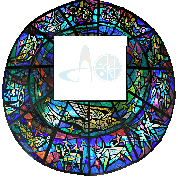

|
International Conference
|
Abstract The first double neutron star merger was observed by LIGO/Virgo collaboration on August 17, 2017 (GW170817). The possible formation scenarios include isolated (classical) binary evolution, dynamical formation in globular, or nuclear clusters, and other more exotic scenarios like the involvement of quark stars. Here we present the recent simulated results aimed at formation of a binary compact object with a special attention put to GW170817 progenitors. All tested formation scenarios give merger rates far below the observational estimated ones. The highest merger rate is predicted for isolated binary evolution which is still 2 orders of magnitude too small. The scenario involving quark stars shows even worse comparison, but may potentially explain other observational features of GW170817. The results tell us that one of the options is possible: either the only observation is just a statistical coincidence, our understanding of stellar and binary physics is incomplete, or we are missing some important non-canonical formation scenario.
Reference:
|